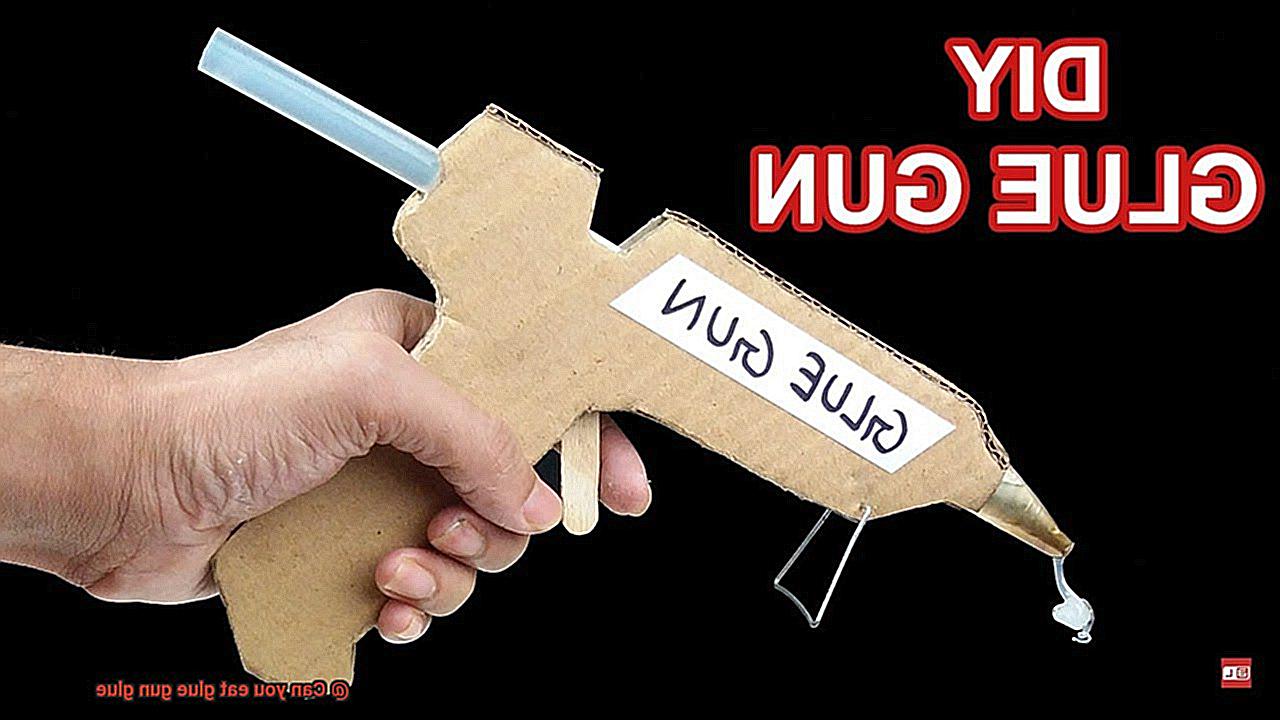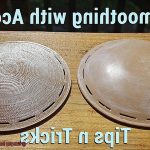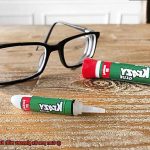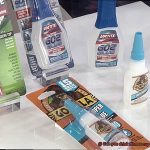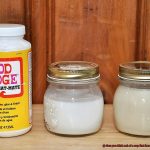Picture this: you’re in the zone, crafting away with your trusty glue gun, when a peculiar thought pops into your head – can you actually eat glue gun glue? It might sound like a strange question, but let’s face it, we’ve all been curious about the taste and potential risks of devouring this commonly used adhesive.
In this blog post, we’re going to dive deep into the captivating world of glue gun glue and find out if it’s safe for consumption. We’ll explore its composition, potential health hazards, and even uncover some unexpected alternative uses for this sticky substance.
So, grab a seat (preferably one that spins), put on your safety goggles (because why not look artsy while learning?), and join me as we embark on an exciting journey through the fascinating realm of glue guns and their tempting adhesive creations. But before we satisfy our burning question, let’s first understand what exactly makes up glue gun glue.
What is Glue Gun Glue?
Contents
- 1 What is Glue Gun Glue?
- 2 Ingredients in Glue Gun Glue
- 3 How Does Glue Gun Glue Work?
- 4 Health Risks of Eating Glue Gun Glue
- 5 Symptoms of Ingesting Glue Gun Glue
- 6 Potential Harmful Additives in Glue Gun Glue
- 7 Accidental Ingestion of Small Amounts of Glue Gun Glue
- 8 Safety Tips for Using and Storing Glue Gun Glues
- 9 Conclusion
Glue gun glue, also referred to as hot melt adhesive, is a remarkable adhesive that has become a beloved tool in the world of crafts and do-it-yourself projects. This versatile adhesive offers a multitude of benefits, including its rapid drying time, exceptional bond strength, and resistance to high temperatures. To truly appreciate the wonders of glue gun glue, it’s important to understand its composition, uses, and safety precautions.
Composition and Uses:
Glue gun glue is primarily composed of thermoplastic polymers like ethylene-vinyl acetate (EVA) or polyamide. These polymers are skillfully blended with resins and waxes to enhance the adhesive qualities. The result is an adhesive that is shaped into solid cylindrical sticks, which are easily inserted into a glue gun.
Once heated, the glue transforms into a liquid state, enabling effortless application on an array of surfaces such as wood, plastic, fabric, foam, and metal. Whether you’re creating stunning works of art, repairing household items, or crafting DIY decorations, glue gun glue is the adhesive of choice for countless enthusiasts.
Benefits:
The rapid drying time of glue gun glue is one of its greatest advantages. This quick-drying characteristic allows for immediate bonding, saving precious time during crafting sessions or repairs. No more waiting around for hours for the adhesive to set – with glue gun glue, your projects can soar to new heights in record time.
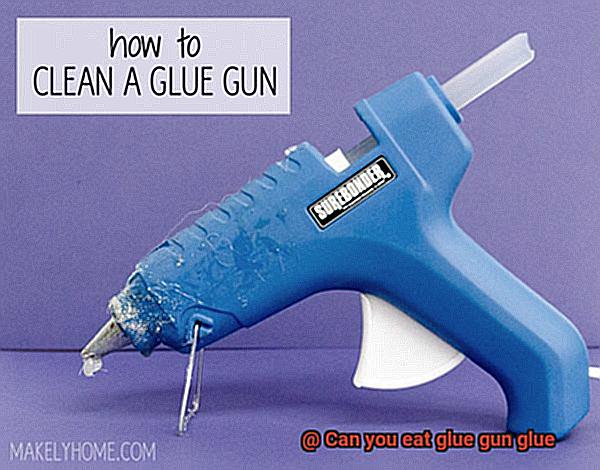
In addition to its speedy drying time, glue gun glue boasts exceptional bond strength. Its strong bond ensures that your creations or repairs stand the test of time. Say goodbye to flimsy connections and hello to robust and reliable bonds that can withstand everyday wear and tear.
Moreover, glue gun glue exhibits remarkable resistance to high temperatures once cooled and hardened. This means that if you’re creating jewelry that will be exposed to heat or fixing broken household items that will endure elevated temperatures, glue gun glue is the adhesive you can trust to maintain its integrity.

Safety Precautions:
While glue gun glue is generally safe for its intended purposes, it should never be ingested. The synthetic polymers and additives present in the adhesive can pose significant health risks if consumed.
Ingesting glue gun glue can lead to gastrointestinal complications, including blockages, inflammation, and discomfort. To ensure the safety of yourself, children, and pets, it is essential to store glue gun glue and other adhesives out of reach.
Ingredients in Glue Gun Glue
Today, we embark on a captivating journey to uncover the secret ingredients that bring this adhesive marvel to life. So, prepare your glue guns, for we are about to delve into the mesmerizing world of glue gun glue.
Base Polymer: The Foundation of Unyielding Strength
At the core of every glue gun glue stick lies a remarkable thermoplastic polymer. These extraordinary materials, such as ethylene-vinyl acetate (EVA) or polyamide, possess the ability to metamorphose from solid sticks into molten wonder with just a touch of heat. EVA-based glue sticks gracefully cater to everyday crafting endeavors, while their polyamide-based counterparts unleash an unparalleled force suitable for even the most demanding industrial projects.
Plasticizers: Bending the Boundaries of Flexibility and Adhesion
To ensure our glue gun glue is as pliable as our boundless imagination, we infuse it with plasticizers. These exceptional chemicals, like diethylene glycol dibenzoate (DGBE) and triethylene glycol diacetate (TEGDA), banish brittleness and amplify its adhesion prowess. They empower our adhesive bonds to cling steadfastly to any surface we dare to conquer.
Additives: The Extraordinary Sidekicks
Just as superheroes have trusty sidekicks by their side, glue gun glue possesses its own team of additives. Tackifiers swoop in to bestow upon us that initial stickiness required for precise placement. Antioxidants join the party, guarding against the ravages of time and ensuring our creations endure long after they are crafted. And let us not forget about colorants – they infuse our projects with a vibrant personality, making them truly one-of-a-kind.
Stabilizers: Shielding Our Glue from the Elements
Even our adhesive superheroes require protection. Enter the stalwart stabilizers, shielding our glue gun glue from the perils of heat and UV exposure that could otherwise diminish its unfathomable powers. With these mighty additives in place, our adhesive remains unyielding and ever-ready for action, even in the face of the most arduous challenges.
Conclusion:
As we bid adieu to our riveting adventure into the world of glue gun glue, let us always remember that safety is paramount. While the ingredients in glue gun glue are safe for their intended purpose, they should never be consumed. Accidental ingestion can lead to serious health issues. So, keep your glue gun glue far away from your mouth and any food items – it is not a condiment.
How Does Glue Gun Glue Work?
Get ready to be amazed as we uncover the secrets behind this versatile adhesive and unveil its magical powers.
Glue gun glue sticks are like a secret blend of synthetic polymers and resins. These extraordinary ingredients have low melting points, allowing them to transform from solid sticks into molten wonder with just a little heat. When you load these sticks into a glue gun, they enter a heating chamber where temperatures rise to a scorching 250 to 400 degrees Fahrenheit (121 to 204 degrees Celsius).
As the glue sticks bask in the warmth of the heating chamber, they undergo a mesmerizing metamorphosis. Their once-solid forms start to soften and melt into a liquid state. It’s like witnessing a caterpillar turning into a butterfly. Once fully melted, the hot glue is ready to work its magic.
But how does this molten marvel escape the glue gun? Fear not, my curious friends, for every glue gun comes equipped with a trusty nozzle designed to dispense the hot glue with precision. Whether you squeeze a trigger or apply pressure to a feed mechanism, the nozzle controls the flow of the glue and allows you to apply it onto your desired surface.
Now here comes the truly enchanting part – as soon as the hot glue touches the surface, it cools down and solidifies within seconds. It’s like witnessing an instant transformation from liquid to solid. This rapid setting time is one of the reasons why hot melt adhesives are so popular. They’re perfect for quick fixes, temporary bonds, and applications where immediate strength is required.
But wait, there’s more. Hot melt adhesives aren’t just fast, they’re also incredibly versatile. They have this extraordinary ability to bond a wide range of materials with ease. Whether you’re working with wood, fabric, plastic, metal, ceramics, or even porous surfaces like foam, hot glue can handle it all. That’s why you’ll find these adhesive superheroes in various industries such as arts and crafts, woodworking, packaging, electronics, and more.
However, it’s crucial to choose the right adhesive for the task at hand. The strength and durability of the bond can vary depending on factors like the specific adhesive used, the surface materials being bonded, and the application technique. Some hot melt adhesives offer high strength and resistance to heat, moisture, and chemicals, while others are better suited for lighter-duty applications.
Health Risks of Eating Glue Gun Glue
Glue gun glue, also known as hot glue, is an incredible adhesive widely used in industries and DIY projects. However, it is crucial to remember that this adhesive is not meant for consumption and can pose significant health risks. Let’s explore the dangers of ingesting glue gun glue.
Choking Hazard:
One immediate concern is the risk of choking. When glue gun glue hardens, it can obstruct the airway if swallowed. This is particularly alarming for children who might mistake the glue for food or candy. To prevent accidents, it’s essential to store glue guns and sticks out of their reach and supervise their use.
Toxic Fumes:
Melting hot glue emits toxic fumes that can irritate the respiratory system. These fumes cause coughing, wheezing, and shortness of breath. Prolonged exposure can lead to severe respiratory conditions. It’s important to use hot glue in a well-ventilated area to minimize inhalation of these harmful fumes.
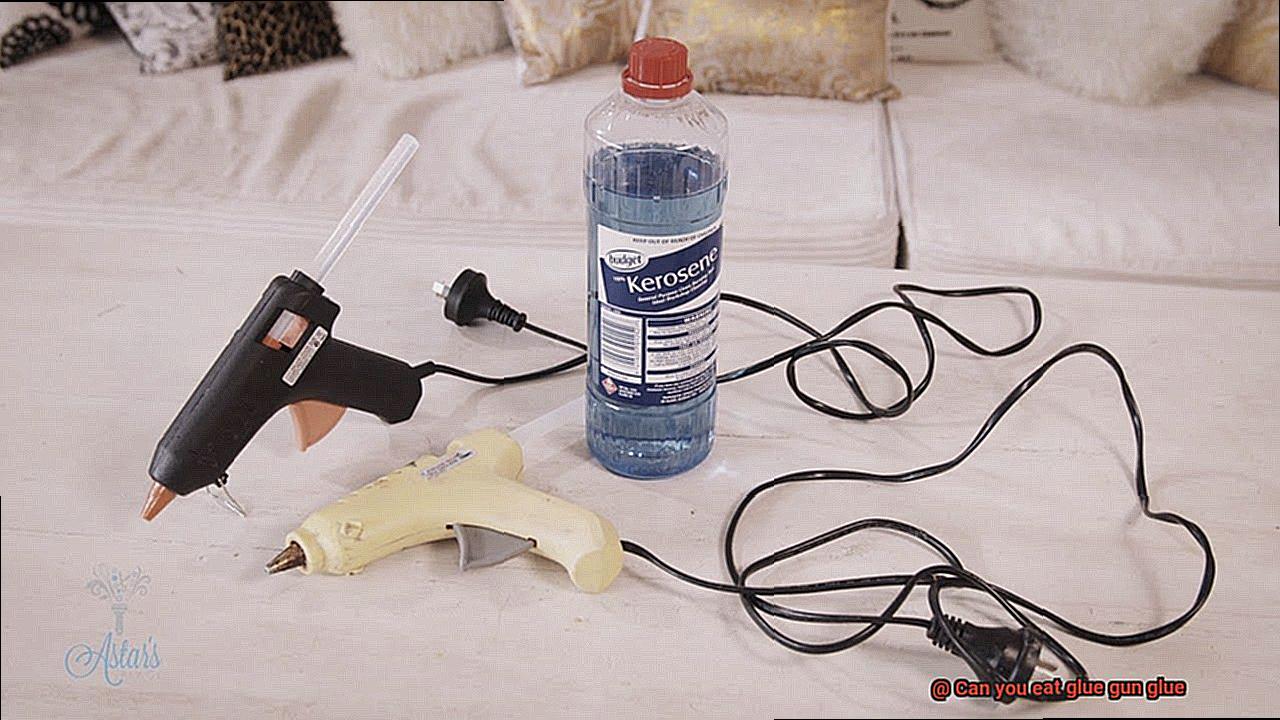
Chemical Additives and Solvents:
Some glue gun glues contain toxic additives or solvents that can harm the body if ingested. These chemicals can cause gastrointestinal issues like nausea, vomiting, and abdominal pain. They may also have long-term effects on organs such as the liver. Even if labeled non-toxic, consuming large amounts can still be detrimental to health.
Seek Medical Attention:
If someone accidentally ingests glue gun glue, immediate medical attention is crucial. Healthcare providers will assess the situation and provide appropriate treatment based on symptoms and circumstances. Prioritizing health-related incidents ensures safety.
Symptoms of Ingesting Glue Gun Glue
Ingesting glue gun glue may seem like a harmless mishap, but let me tell you, it can lead to some seriously unglamorous consequences. So, let’s dive into the world of symptoms and explore what happens when this sticky substance enters our bodies.
First off, let’s make one thing crystal clear – glue gun glue is not meant to be consumed. I repeat, do not eat it. If you disregard this warning and take a taste, get ready for a rollercoaster ride of gastrointestinal issues. Nausea, vomiting, and stomach pain might become your unwelcome companions, turning your day from crafty fun to an uncomfortable journey through the digestive system.
But that’s not all, my friends. Ingesting glue gun glue can also wreak havoc on your ability to breathe. Picture this – a sticky obstruction lodged in your airway, making it difficult to catch your breath. Not exactly a scene from a happy crafting adventure, right? So, let’s keep the glue far away from our mouths and noses.
Now, brace yourself for a twist – some individuals might even experience an allergic reaction to this adhesive concoction. Imagine your skin itching like crazy, hives popping up everywhere, and swelling making you feel like a balloon about to burst. Definitely not the kind of post-crafting glow-up we’re aiming for. So, let’s be cautious and avoid any unnecessary discomfort.
But here’s where things take a serious turn. If you happen to ingest a large amount of glue gun glue, you’re in for trouble. It has the potential to block your digestive system or cause an intestinal obstruction – a nightmare scenario no one wants to face.
So, what’s the game plan if this sticky mishap happens? Here’s the golden rule – seek medical attention immediately. Remember, everyone’s reaction can vary, so getting proper evaluation and guidance from a healthcare professional is absolutely crucial.
Potential Harmful Additives in Glue Gun Glue
It’s important to be aware of the potential harmful additives that may be present in some formulations.
One common additive in glue gun glue is ethylene-vinyl acetate (EVA). Although EVA itself is not toxic, when heated above its melting point, it can release fumes that are less than pleasant. That’s why it’s crucial to use glue guns in well-ventilated areas to minimize exposure.
Another potential additive is butylated hydroxytoluene (BHT), an antioxidant that prevents the glue from deteriorating over time. However, there are concerns about its link to cancer and other health issues. So, it’s important to be cautious of this potential risk.
In addition to EVA and BHT, some glue gun glues may contain plasticizers, colorants, and stabilizers. These additives serve various purposes like improving flow and enhancing appearance. While not all additives are harmful, finding the right balance is crucial.
When using glue gun glue, always follow the manufacturer’s instructions and work in a well-ventilated area to reduce exposure to potentially harmful fumes. Never ingest glue gun glue. Apart from the harmful additives it may contain, the high temperature at which the glue melts can cause burns or other injuries if it comes into contact with your skin or mucous membranes.
Accidental Ingestion of Small Amounts of Glue Gun Glue
First and foremost, one of the main concerns is the risk of choking. Glue gun glue hardens quickly and can create a solid mass if swallowed. This can lead to an obstruction in the airway or digestive system, especially in young children who may not be able to properly chew or swallow the glue.
So, it’s crucial to keep glue guns and glue sticks out of reach of children and supervise them during crafting activities.
But that’s not all. Even though the main components of glue gun glue are generally considered non-toxic, some brands may contain additional additives or chemicals that could be harmful if ingested.
For example, ethylene-vinyl acetate (EVA), a common component, releases fumes when heated up that are far from delightful. Inhaling these fumes is not only unpleasant but could also have negative health effects.
Another additive to watch out for is butylated hydroxytoluene (BHT), which is used to prevent the glue from going bad over time. Unfortunately, BHT has been linked to health issues like cancer. So, if you want to minimize your risks, it’s essential to stay informed and look for glues without harmful additives.
Ingesting glue gun glue can also cause gastrointestinal irritation or upset stomach. The heat from the glue can burn or irritate the mouth, throat, and stomach lining. It’s important to remember that even small amounts can have an impact on your digestive system.
Rarely, individuals may experience allergic reactions if they have a sensitivity to any of the components in the glue gun glue. If you notice any signs of an allergic reaction such as swelling, difficulty breathing, or hives, seek immediate medical attention.
To prevent accidents, it’s crucial to educate children about the risks of ingesting glue and teach them not to put objects in their mouths. Additionally, always follow the manufacturer’s instructions and work in a well-ventilated area when using glue gun glue to minimize the risk of inhaling harmful fumes.
In case accidental ingestion does occur, it’s important to seek medical attention immediately. Healthcare providers will assess the situation and determine the appropriate course of action, whether it’s monitoring for adverse effects or providing necessary treatment.
Safety Tips for Using and Storing Glue Gun Glues
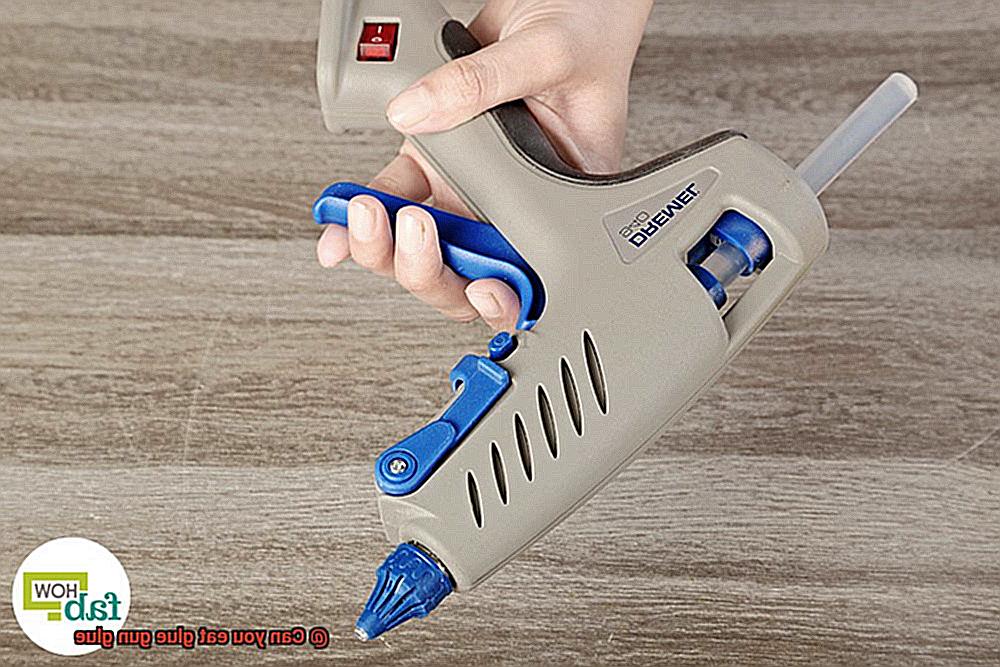
Glue gun glues are a popular adhesive used for crafts and DIY projects. While they can be fun to use, it’s important to follow safety precautions to avoid accidents and injuries. In this essay, we will explore some essential safety tips for using and storing glue gun glues.
Protect Your Hands
Hot glue can reach temperatures of up to 400 degrees Fahrenheit, so always wear protective gloves when using a glue gun. This will prevent burns and keep your hands safe from the high temperatures. Additionally, make sure to never touch the nozzle or the melted glue directly with your bare hands.
Work in a Well-Ventilated Area
Some glue gun glues release fumes when melted, so it’s crucial to work in a well-ventilated space. Open windows or use a fan to ensure proper air circulation and avoid inhaling any harmful fumes. If you experience any dizziness or difficulty breathing while using the glue gun, step away from the area immediately and seek fresh air.
Keep Away from Flammable Materials
Hot glue can cause flammable materials like fabric, paper, or wood to catch fire. Make sure to keep your glue gun away from these materials to prevent accidents. Always have a fire extinguisher nearby in case of emergencies and never leave a hot glue gun unattended.
Store Properly
To maintain the quality of your glue gun glues, store them in a cool and dry place. Extreme heat or moisture can affect the glue’s performance, so it’s important to keep them in optimal conditions. Ensure that the glue sticks are stored in an airtight container or bag to prevent them from drying out.
Keep Out of Reach
Children and pets should never handle glue gun glues or the glue gun itself. The hot glue can cause severe burns if touched or ingested. Store the glue gun in a safe place where it cannot be accidentally accessed. Unplug the glue gun after use and keep the cords out of reach to prevent any mishaps.
fbnYM1pmdto” >
Also Read: Is Hot Glue Toxic? – Glue Things
Conclusion
The conclusion is the final verdict on whether or not you can consume glue gun glue.
After careful consideration and research, it is clear that glue gun glue should NOT be eaten under any circumstances. This adhesive substance is specifically designed for bonding materials together, not for ingestion.
Ingesting glue gun glue can lead to serious health risks and potential poisoning. It contains chemicals that are harmful to the human body and can cause gastrointestinal issues, respiratory problems, and even damage to internal organs.
Furthermore, glue gun glue is not meant to be digested and may cause blockages in the digestive system if consumed.

